China is famous for many places and things. It is a country full of symbols and faces. Some of its faces are very well known and popular, such as the Great Wall, the Giant Panda or the skyscrapers of Shanghai.
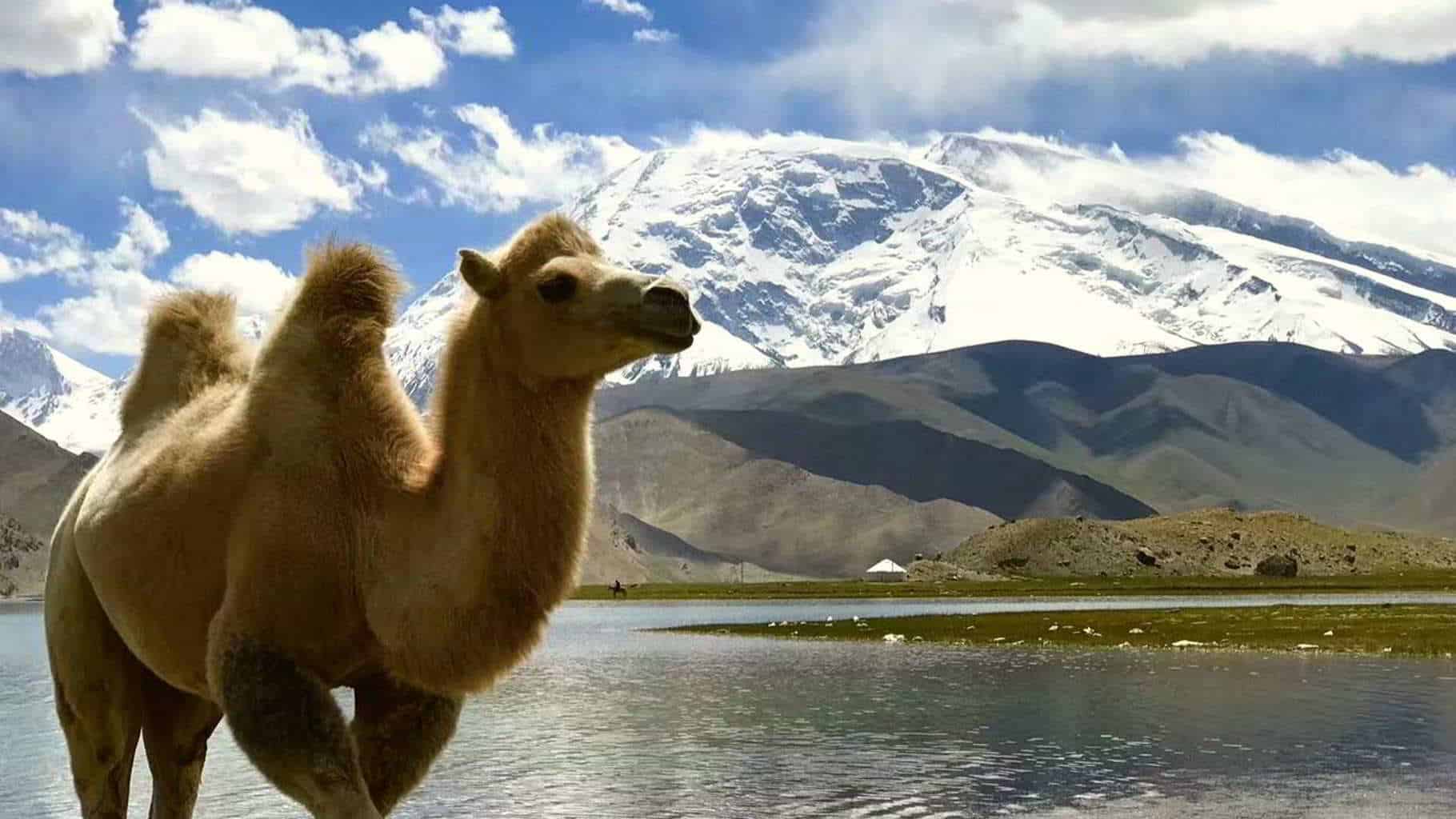
But there is also another China”, totally different from what most non-Chinese know. One of the places that it can be seen is in the extreme far Western part of China, in the Xinjiang province.
This is also where the westernmost town in China is located, and off the beaten pearl, called Tashkurgan, on the Chinese section of the heavenly Karakoram Highway.
Xinjiang province as a lot to offer here´s 12 Amazing places you have to visit in Xinjiang.
Where is Tashkurgan?
The location of Tashkurgan is extraordinary. If you want to find where it is on the map, you have to look at the map of China, focusing on the westernmost angle of the country.
On a political map, you will notice that several countries meet together around this angle- China, Kyrgyzstan, Tajikistan, Afghanistan, Pakistan and India (and it is the area with most country borders concentrated in one place on the Earth, some of which still under dispute).
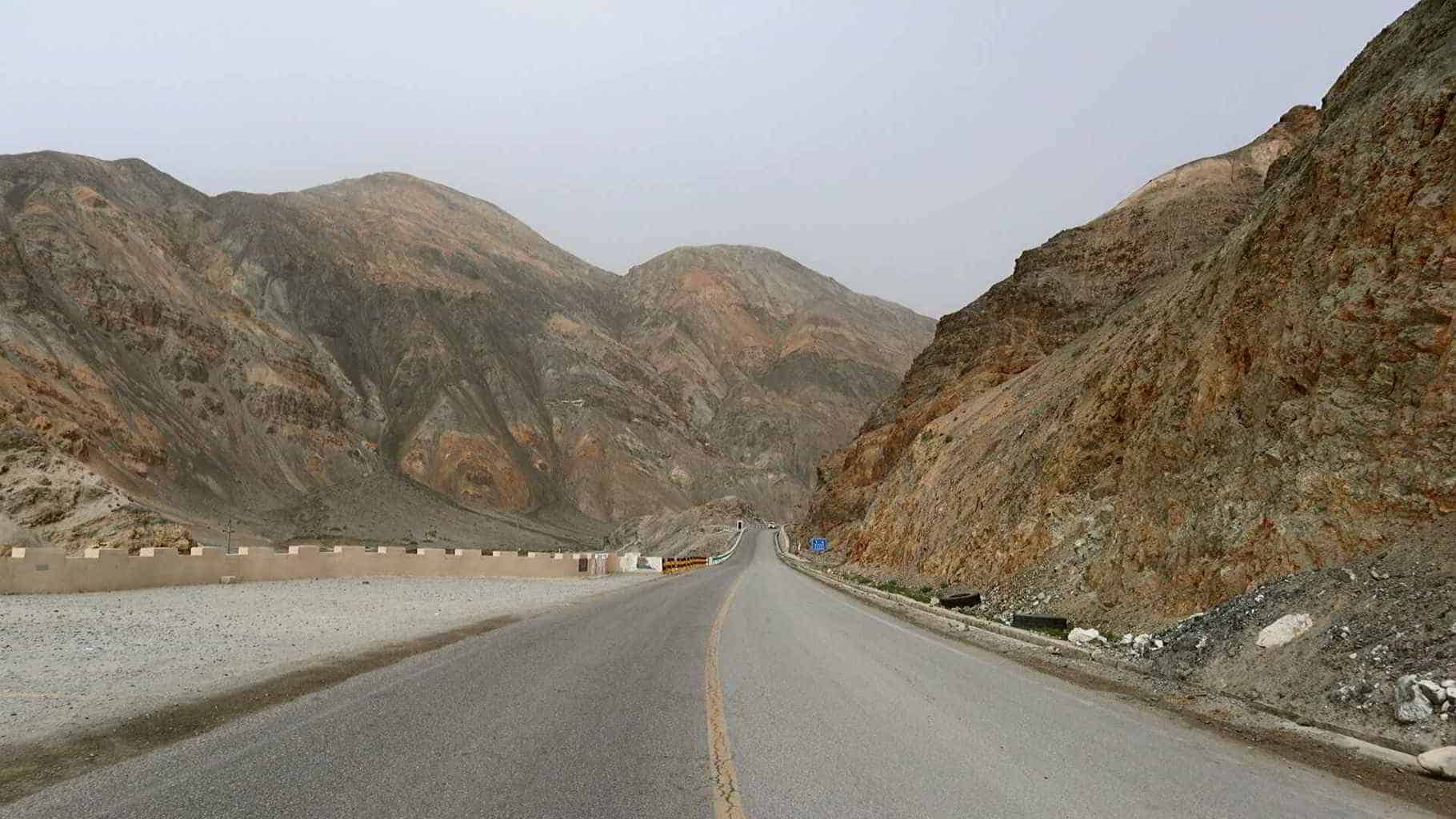
And if you look at a physical map, you will see that this area is highly mountainous. Several of the highest mountains on the Earth meet there- Pamir, Hindukush, Karakoram, Kunlunshan and the Himalayas.
In fact, Tashkurgan is located in a very “strategic” point on “the Roof of the World”.
A vital road crosses this area. It is known as “Karakoram Highway”, and it connects the Tarim Basin of Central Asia with Pakistan and India.
The road crosses “the Roof of the World” through Khunjerab Pass, where the border between China and Pakistan passes.
With its 4714 m altitude, it is well known as the highest border pass on the Earth, which is the reason Karakoram Highway to be called by some people as “the 8th wonder of the world”.
And Tashkurgan is one of its most important stops, contributing to the exotic image of this highway.
History of Tashkurgan.
The modern Karakoram Highway has been only recently built, just about half of a century ago. But since ancient times, there were roads crossing the high mountains on the same route, and they were an important part of the famous Silk Road. And Tashkurgan has been a very important caravan stopover.
At the same time, due to its extremely hard access high in the mountains, the whole area has been difficult to be conquered by the nearby empires, and it remained independent for long periods of time.
The first known kingdom formed around Tashkurgan was the Puli Kingdom, also known as the Varshadeh Kingdom. It has been mentioned in the Chinese Han Dynasty history books, which dates the time period of this kingdom to at least 2000 years ago.
Other known independent states existed in the area are Sarikol and Qiepantuo kingdoms. The surrounding big empires have probably conquered Tashkurgan area for a while, but it is unclear for how long time.
Among them, the most successful were the Tibetan Empire in the 8th century, and the Great Mongol Empire in the 13th century. Finally, in the 18th century, Tashkurgan was incorporated into the Qing Empire, and since then, it has been a part of China.
And such a long history hasn’t passed without remains. There is a magnificent fortress beside the town, called Stone City, built on a hill over the nearby grasslands.
The history of this fortress is obscured and full of mystery, but what the archaeologists discovered there is really old. Now it is a must to visit place in Tashkurgan.
The local people of Tashkurgan.
Yes, who are the people built all of these kingdoms and their remains, in this high and harsh mountain land? Since ancient times, all the artefacts, legends and historical annals point to people belonging to the Iranian group.
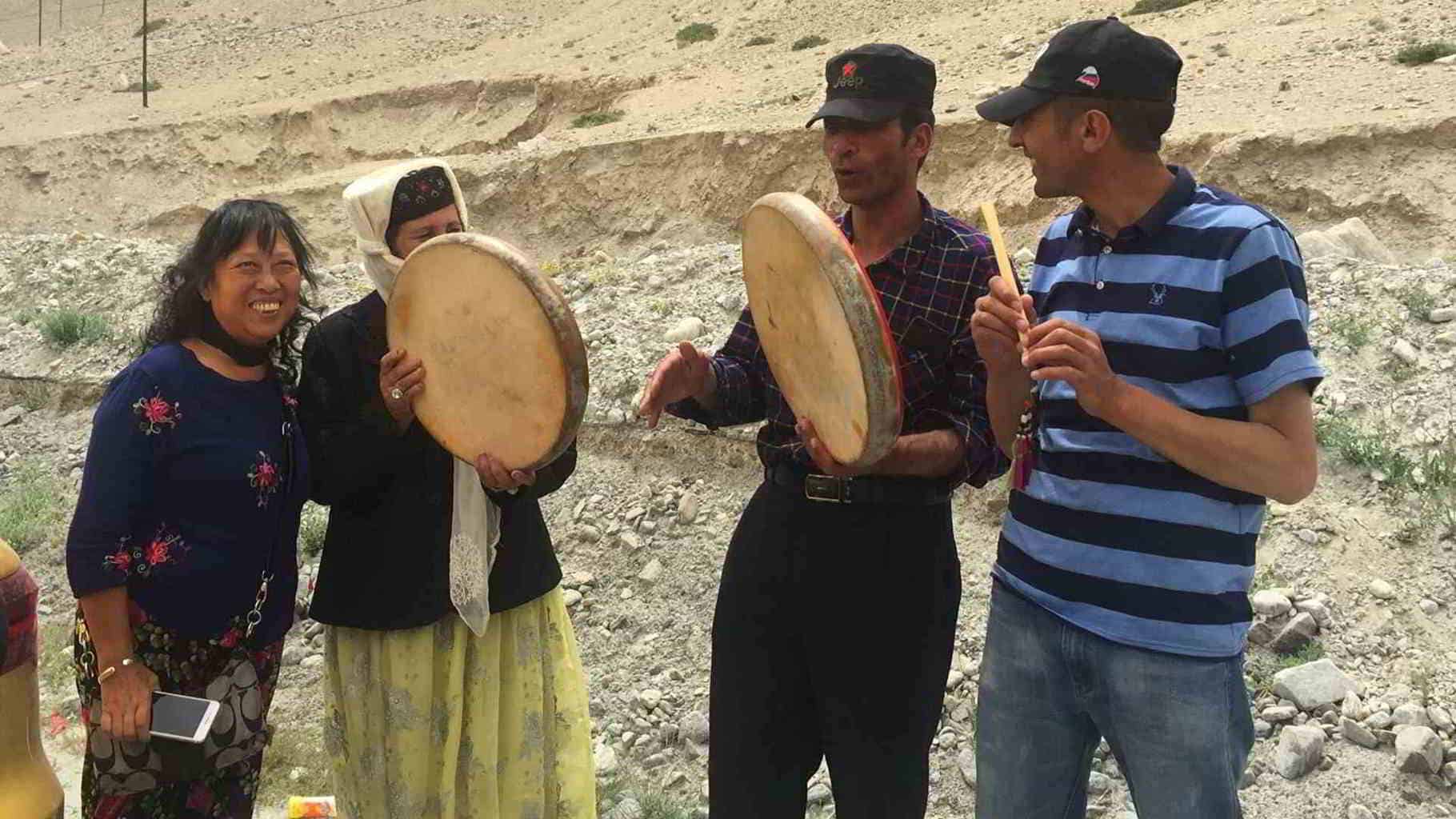
Although many other visitors from the neighbouring empires have settled there too, while travelling on the Silk Road, the local Iranian ethnos has always been a majority.
Now this ethnos is officially called “Tajiks” because their language is relatively close to the Tajiks of Tajikistan.
However, they are still different people, with a different culture.
They call themselves Sarikolis. Another neighbouring ethnos is living in the same area, south of Tashkurgan- the Wakhis, who also live in the Wakhan Corridor of Afghanistan. All they are united under the name “Pamiri Tajiks”.
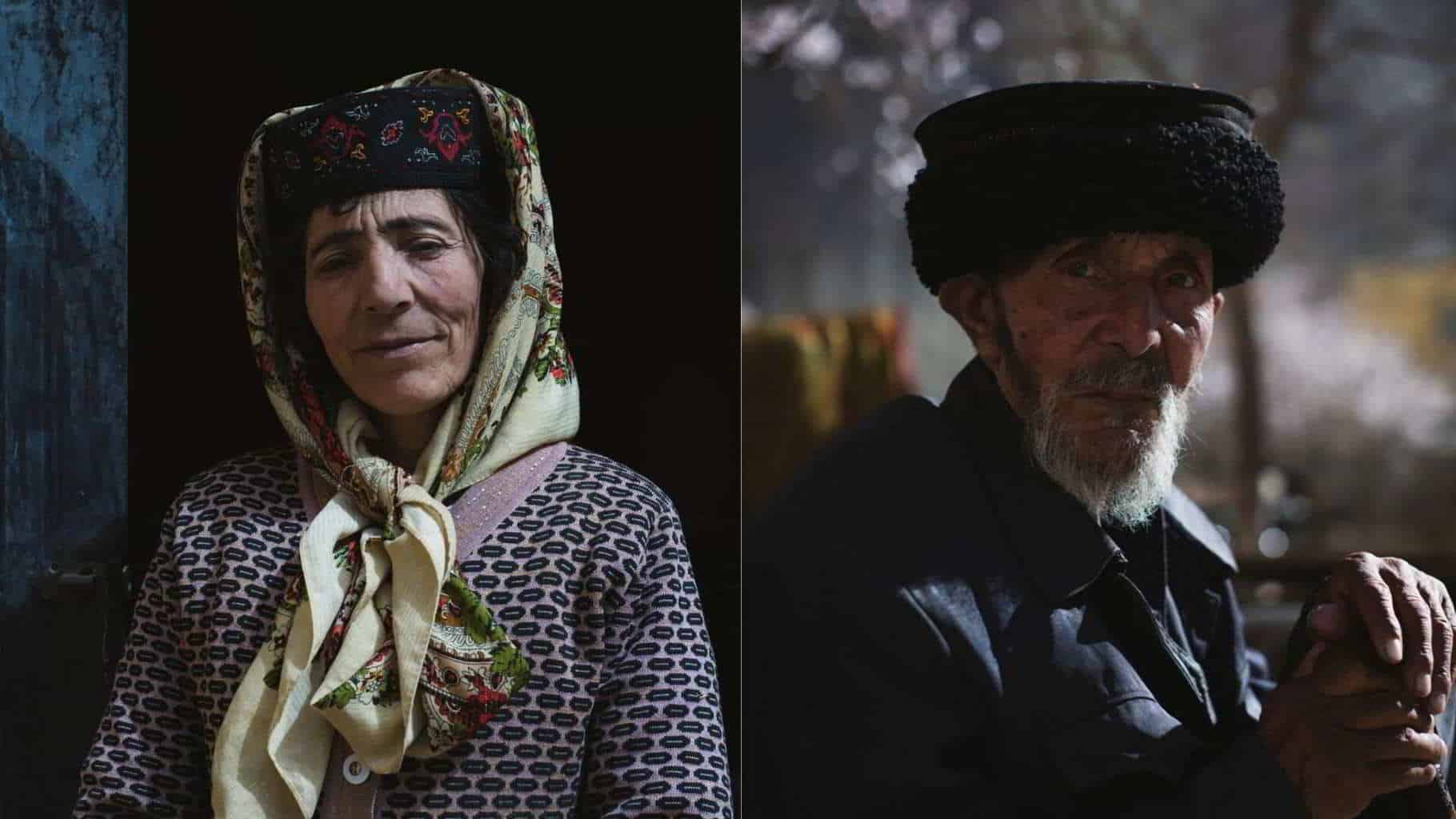
The Pamiri Tajiks are a Caucasian type of people. When we were on our trip to Tashkurgan, and we saw them, we noticed how European they look like. At the same time, they all spoke fluent Chinese, making an impression of Western people with excellent Chinese speaking skills.
Like most of the mountain minorities in the world, the Pamiri Tajiks are warm, welcoming and simple people. Although their Tashkurgan and the surrounding area is more and more opened for tourism, they still remain uncorrupted by the tourist business, following their folklore and culture.
Almost every woman that we saw was wearing her traditional flat hat, and it was a part of their normal daily life.
We met a group of Pamiri Tajiks on the Karakoram Highway, while we were stuck in a damaged part of the road and waiting to be repaired and opened again. They were backing from Kashgar to Tashkurgan, preparing for a wedding. So they were thrilled and excited. While waiting, one of them started to play the whistle, another one- to play the hand drum.
The rest of them started to dance, and we followed them. Finally, we all took photos and hug each other. They opened the road, and we proceeded to Tashkurgan.
What to see and do in Tashkurgan.
Tashkurgan is a small and picturesque town. You should not expect a “lively old town”, full of souvenir shops, restaurants, street food, tourist crowds and various noisy attractions. In contrary, it is a very quiet place.
We woke up in the morning and went out to walk on its streets. It was a beautiful, fresh and chilly summer morning.
The local Pamiri Tajiks were going to work. And the Pakistani immigrants who sell their Pakistani goods were opening their shops. Most of the tourists in the town were Han Chinese and were slowly awakening.
Only a few cars and trucks were passing on the main street of Tashkurgan, which is, in fact, the Karakoram Highway within the town.
The atmosphere is always pastoral (and due to the surrounding magnificent mountains, somehow adventurous), and although the buildings are not old and traditional, you can still experience a unique time there.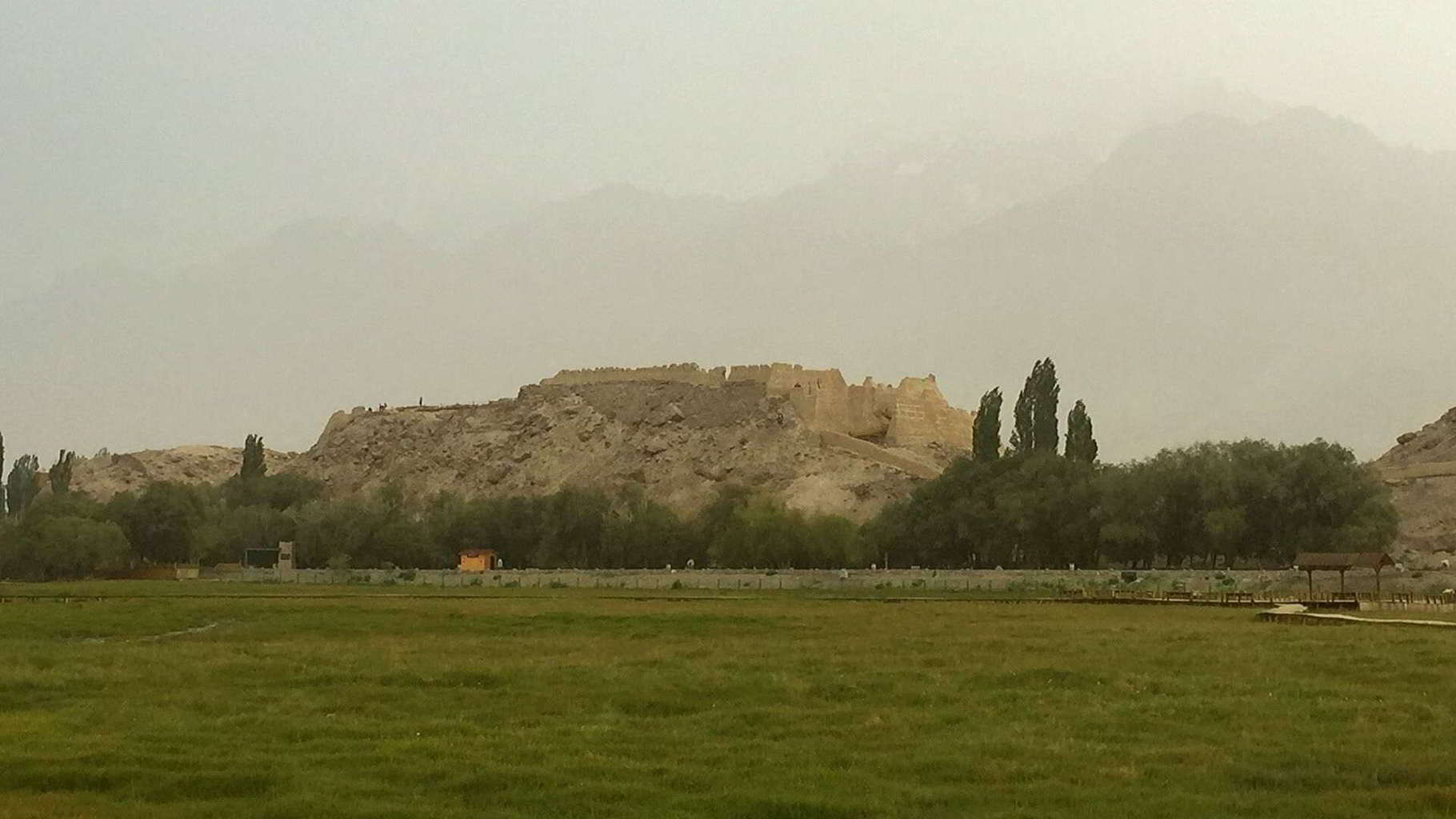
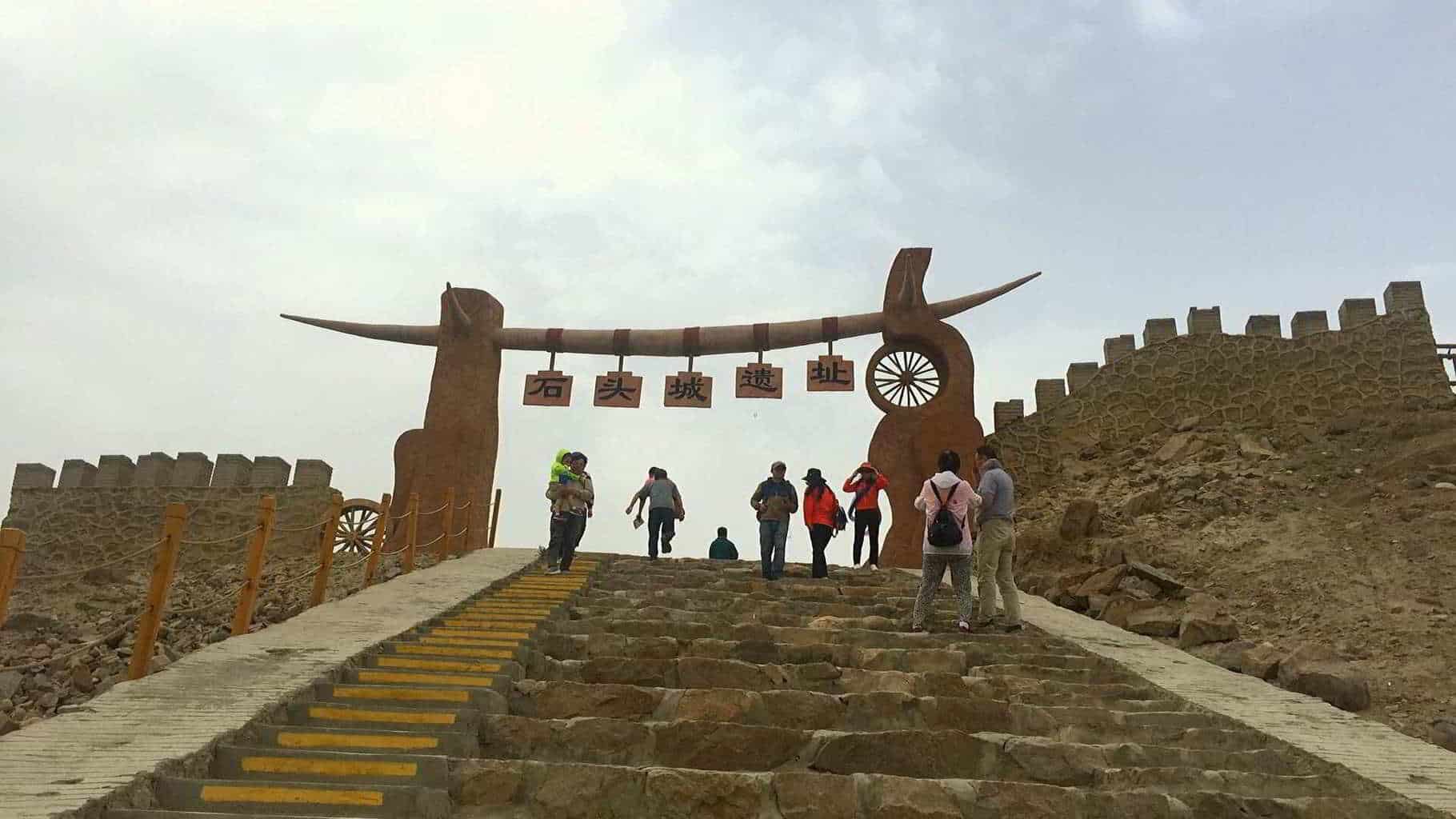
The main symbol of Tashkurgan is the Flying Eagle monument in the centre- a place which is really worth visiting and taking photos if you want to get a nice impression of the town.
You can also visit the small Tashkurgan Museum, which presents some artefacts of the local history, culture and daily life.
But the most important sites are located on the north-northeastern part of Tashkurgan. And the starting point for their exploration is the Tashkurgan Tourist Center.
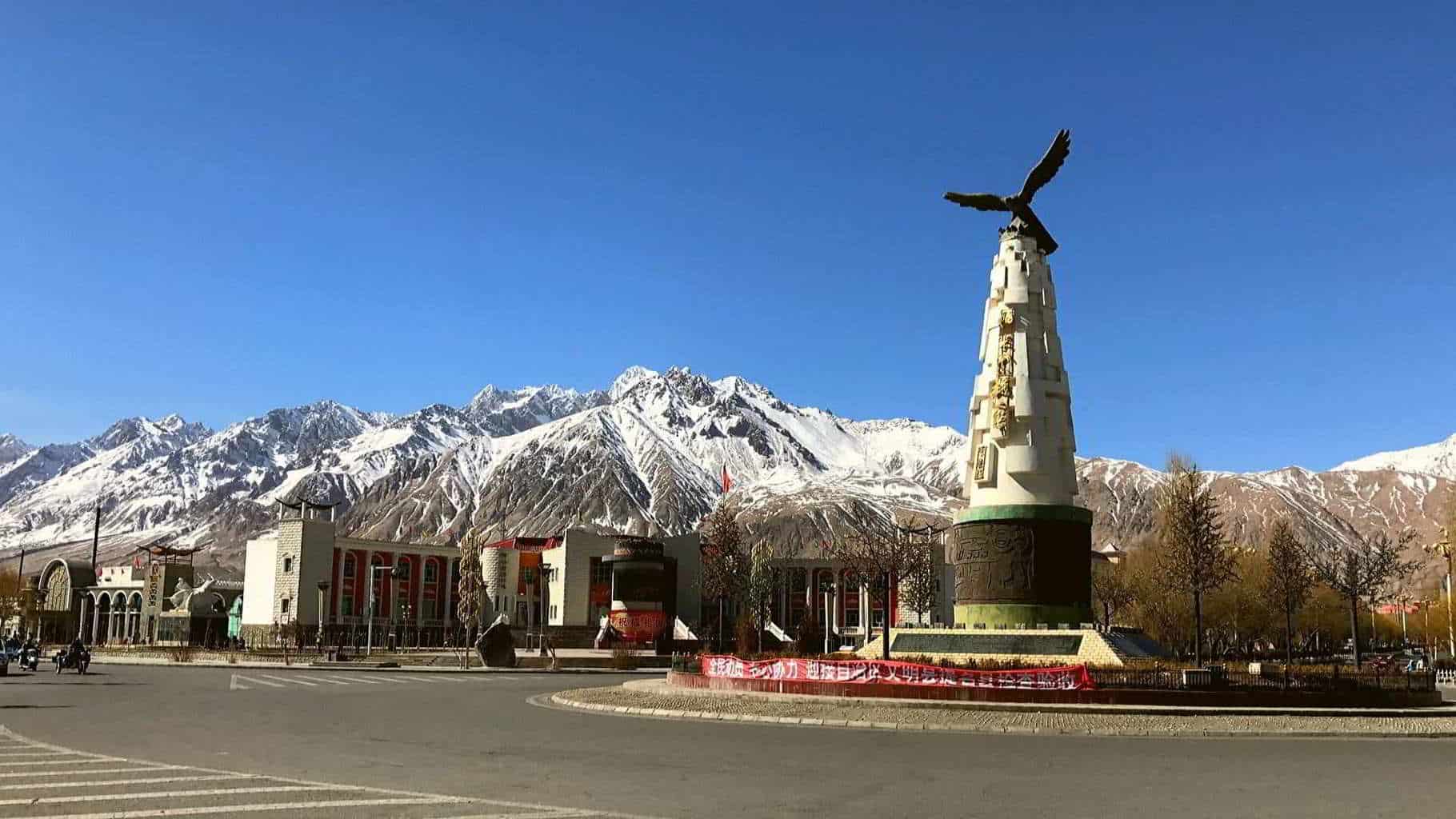
Stone City.
This is the most important site of Tashkurgan. As I mentioned above, it tells us an obscure, but the long history of this area. It is built on a hill, and when you visit it, you can not only dive in the deep far past but also to enjoy the stunning panoramic views to the town, its valley and the magnificent giant mountains around it.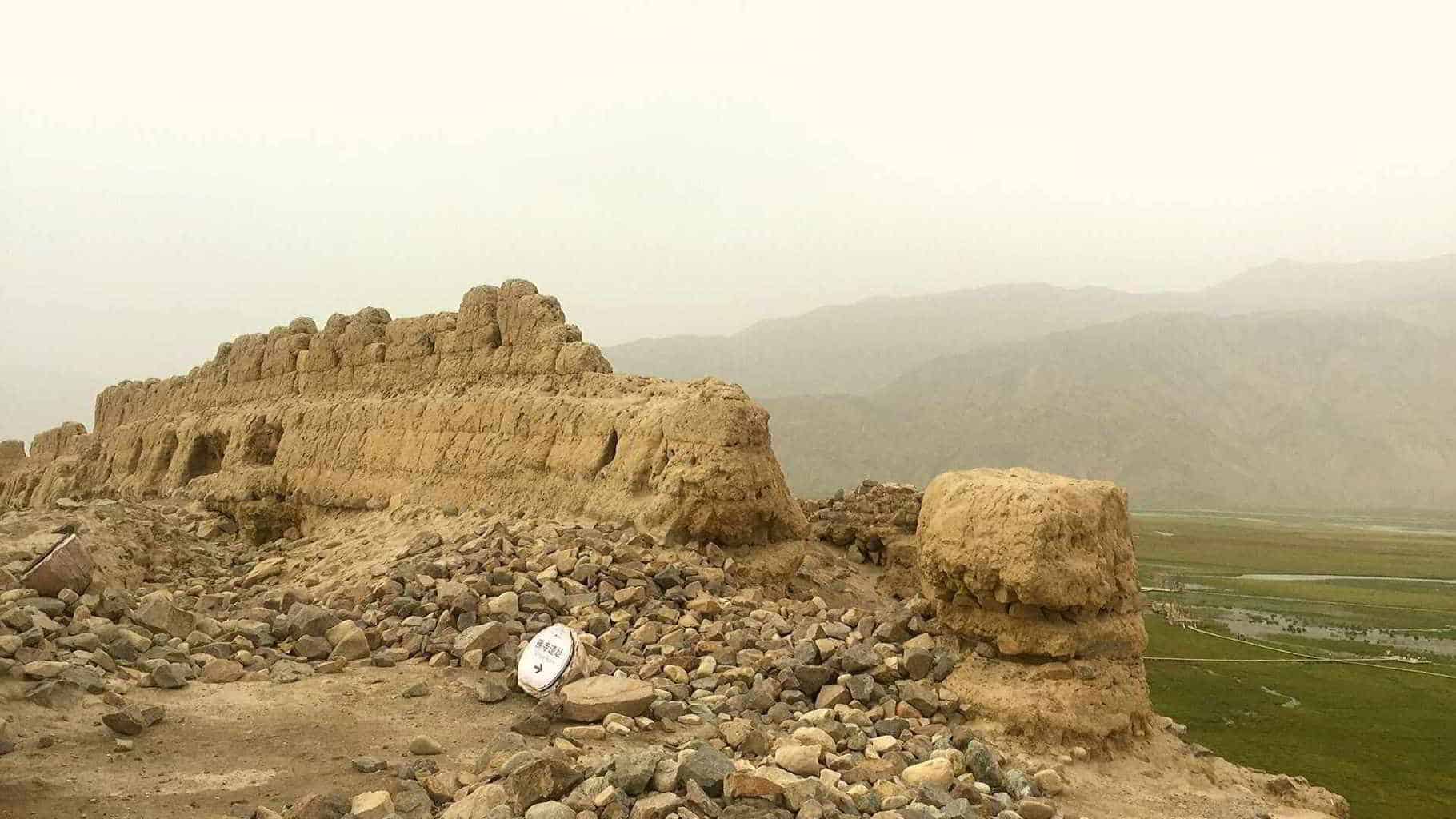
Before (or after) you visit Stone City, I would recommend taking a walk inside the small museum at its entrance, which presents more information about this fortress and the life around it.
Golden Grassland.
It is located east of the Stone City. Tashkurgan river is curving and dividing into many streams through the grassland. Seen from above, it looks really fantastic, with the dominating rugged mountain behind it.
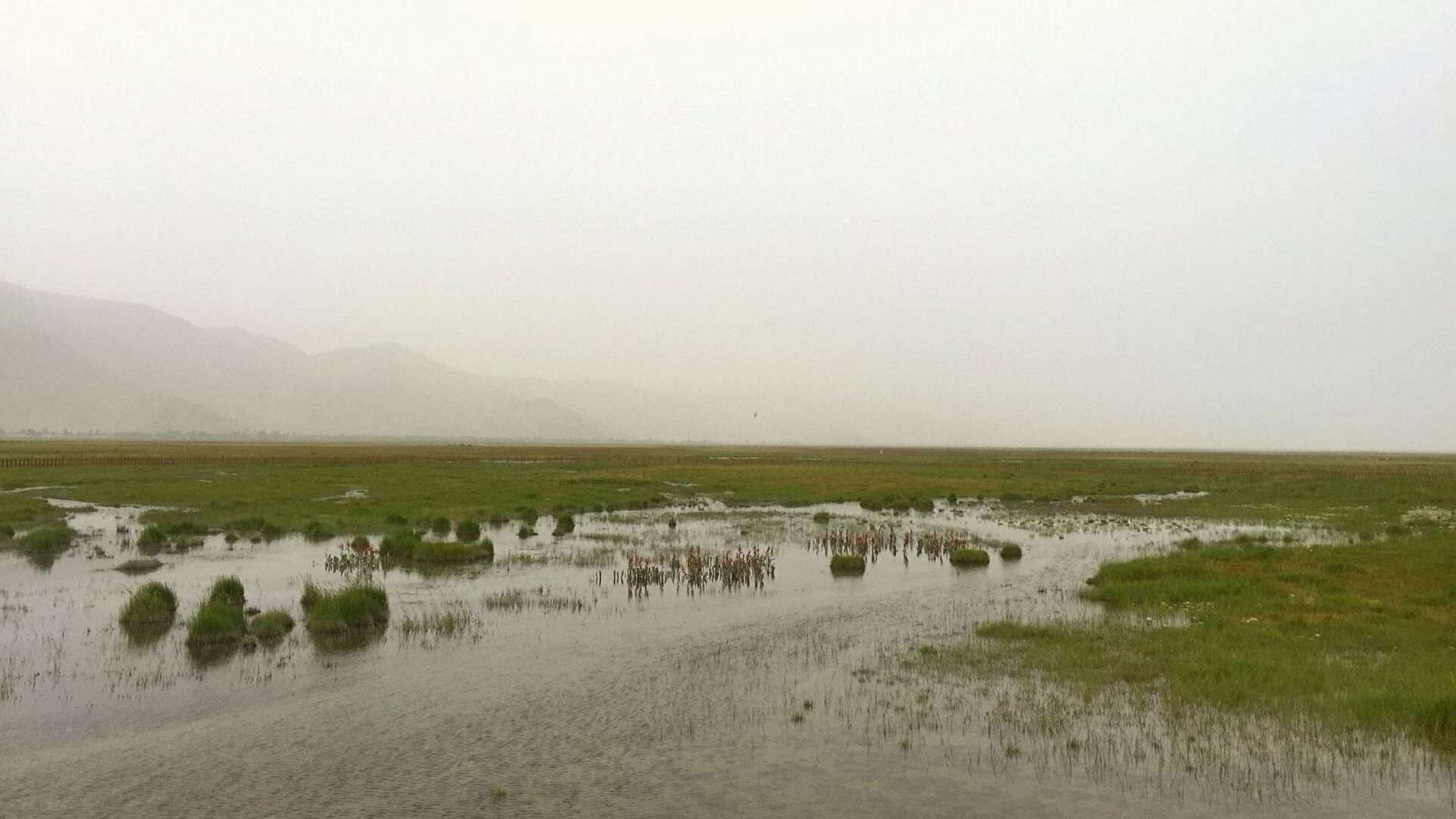
Now a large part of the grassland is arranged for tourists, with alleys, wooden bridges, wooden water wheels and other small attractions. And the view to the Stone City from the grassland is really worth visiting and taking photos.
Tajik Ethno Village.
It is a small neighbourhood beside the Tourist Center, which is specially designed to present the local Pamiri Tajik culture and daily life. In fact, people live there their normal life here.
Some of the work in the Tourist Center, others do their agricultural works nearby, and there are some people who just live in their houses, offering accommodation. You can enter inside and see the interior of their rooms, richly decorated in their local traditional style.
And there is a bonfire place in the village, where you can join a folklore performance around the fire in the evening, dancing together with the Pamiri Tajiks.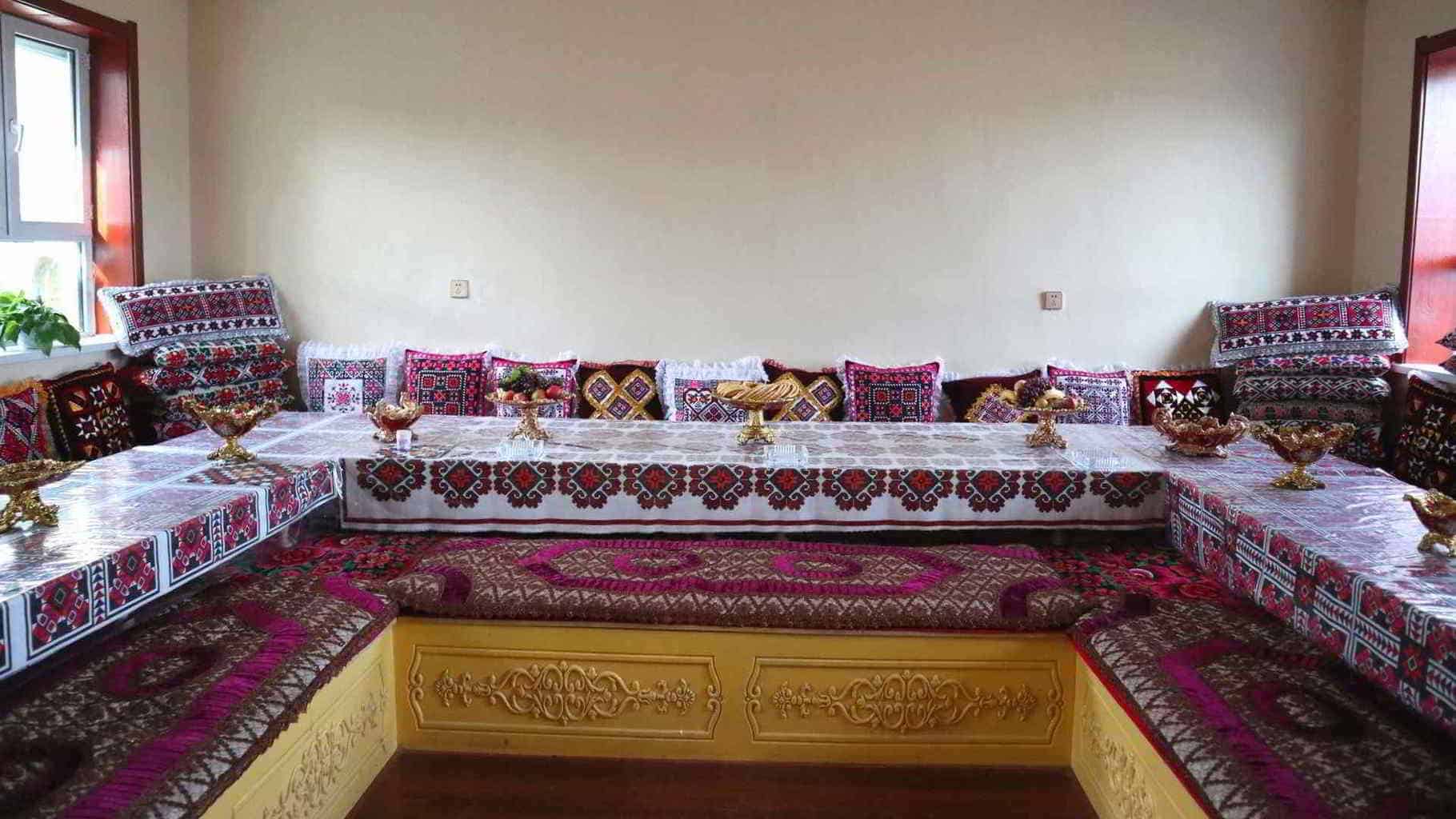
How to reach Tashkurgan- the Karakoram Highway.
Exploring Tashkurgan itself is exciting, but reaching it is even more spectacular. And it is spectacular because the only way to reach it is by travelling on the “heavenly” Karakoram Highway. So, let’s focus on this famous road.
Karakoram Highway is a part of the much longer AH4 Asian Highway, connecting Novosibirsk in Russia with Karachi in Pakistan. Its total length is around 1300 km, of which 410 km are in Chinese territory (in Xinjiang), and the rest 890 km are in Pakistan. On its course, it starts from Kashgar in the Tarim Basin, ascends to the high Pamir Plateau, where Tashkurgan is located and reaches its highest point at Khunjerab Pass.
From Khunjerab Pass it gradually descends to Hunza Valley between the Karakoram and the Himalaya, through Gilgit-Baltistan area. Finally, it reaches the lowlands of Pakistan and ends at Abbottabad. In China, it is numbered as G314, and in Pakistan as N-35. On its course, the road passes through fantastic landscapes and breathtaking scenery, formed by the highest mountains on the Earth.
Peaks like Nanga Parbat, Rakaposhi, Muztagh Ata and Kongur Tagh create majestic views. And many other different landscapes like glaciers, deep gorges, grasslands, lakes and forests can be seen all along its route.
So you can reach Tashkurgan from Kashgar (China) or from Pakistan. And if you do it from Pakistan, such a trip would be a Karakoram Highway trip, on which Tashkurgan is only one of its stops. But if you reach it from Kashgar, you can just make it without crossing the border with Pakistan and back to Kashgar.
In this case, you would enjoy not only Tashkurgan but also the deep Gez River gorge, the fantastic Baisha (White Sand) Lake, the breathtaking views to Kongur Tagh and Muztagh Ata with the stunning landscape of Karakul Lake.
Travel regulations.
Yes, there are special travel regulations for visiting Tashkurgan. And the reason is that it is located only around 12 km from the border of Tajikistan.
As I mentioned above, several countries meet together in the area, some of which (Pakistan and India) have disputed zones with China. Besides, Pakistan and Afghanistan are Muslim countries, which may establish terrorist connections with some Uyghur terrorists.
For all of the above reasons, it is very complicated to place to visit these days.
Until recently, it was easier to travel on the Karakoram Highway from both directions. But now it is much more restricted. Khunjerab Pass is closed for regular passing, and it is crossable only under special conditions.
And the whole area of Tashkurgan is now restricted for independent travel for foreigners, so the only way to travel there from Kashgar is by travel company unless you have a Pakistani visa (which however have other complications).
You have to go to the Travel Center in Kashgar, as they told us- at least two days in advance, and to apply for an organised group trip there.
However, there are some travel agents who can arrange your trip immediately, as it was in our case.
But don’t rely on this, it is really advisable to plan your itinerary so that you can arrange it without problems.
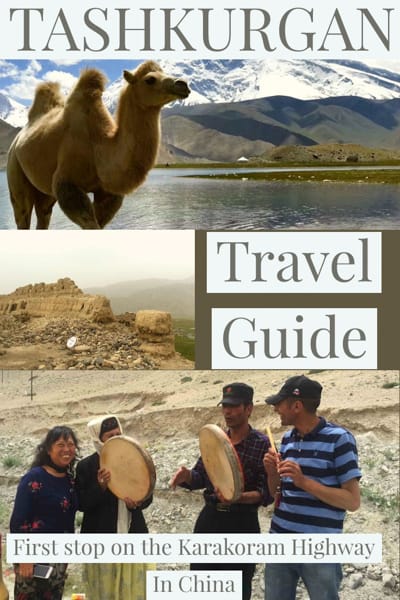
You can do it as you plan Tashkurgan as a part of your Kashgar trip- you arrive in Kashgar, immediately apply for Tashkurgan and spend the two days for waiting to just explore Kashgar and its surroundings.
However, bear in mind that the price for foreigners is a bit expensive- usually around 1500 CNY for one person. At least it includes the hotel in Tashkurgan and the entrance fees for the sites there.
And of course, what probably you would miss is the freedom to choose your own itinerary. Anyway, when you arrive in Tashkurgan, you would have the freedom to walk around the town wherever you want.
But despite of these limitations (which we all hope one day could be removed), a trip to this unique part of the Earth is really worth. You can see fantastic views that can’t be seen anywhere else.
You can dive into a deep and mysterious history on the “Roof of the World”. And you can experience an exciting time with the local people of the high mountain. Want to read more about the Chinese section on the Karakoram Highway, click here to read a complete guide and click here to read about the Pakistan side of the Karakoram Highway.

Author Bio:
Krasen is a traveller from Bulgaria, currently residing in China. He is passioned to explore the
geography on the Earth, from the famous and popular destinations to the most remote, inaccessible and unknown ends of the planet.
And he shares his experience inspiring other travellers in his blog Journey Beyond the Horizon.
You can follow him on Facebook, Twitter, Instagram & Pinterest!
